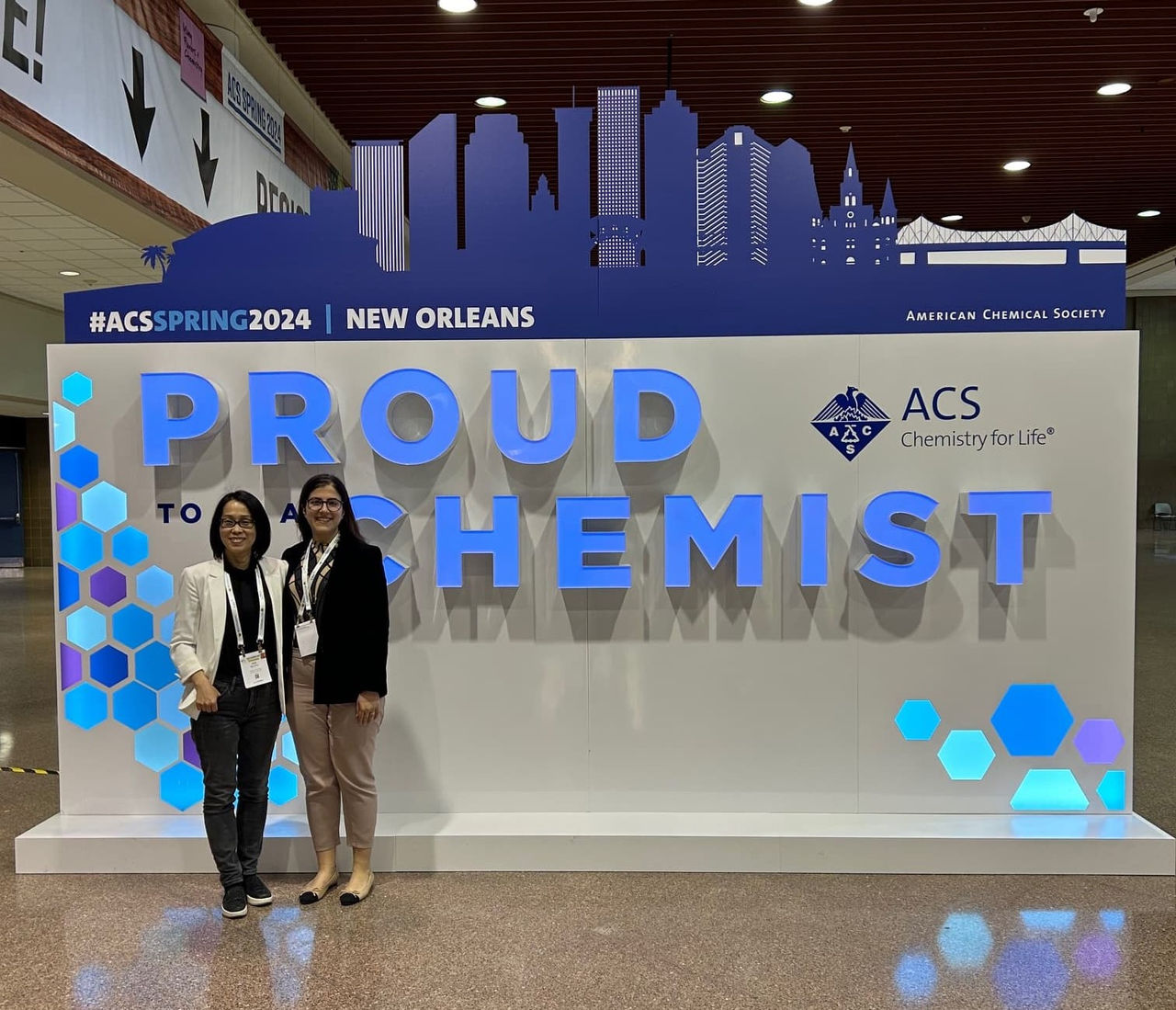Schiller Core faculty member leads multidisciplinary idea exchange at American Chemical Society meeting
By Stephanie M. McPherson
A technology that could capture carbon dioxide from the atmosphere and turn it into clean energy would go a long way in mitigating the climate disaster. Jier Huang, Institute Professor of Renewable Energy and Sustainability and Associate Professor in Chemistry, is working on exactly that. In March, she brought together the nation’s experts in the field at a three-day symposium at the American Chemical Society (ACS)’s Spring 2024 meeting.
Attendees discussed a cutting-edge carbon-negative process that uses sunlight and excess carbon from atmospheric water using new material known as quantum gels. The symposium was funded in part by the Schiller Institute.
“As chemists and materials scientists, we’re developing new molecules/materials and using them to split water with the power of sunlight to create energy and fuel that we can use for clean power,” says Huang. “The final goal is to replace fossil fuels with clean energy to reduce the carbon dioxide (greenhouse gas) emission.”
“Professor Huang’s leadership in bringing this group of leading scientists together highlights the Institute's efforts to spearhead the development of state-of-the art technologies that can hasten the transition to clean energy,” said Laura J. Steinberg, Seidner Family Executive Director of the Schiller Institute.
Huang and colleagues from Wayne State University in Michigan were awarded a Department of Energy grant to explore quantum gels and the technique behind creating them – a process known as quantum dot assembly. Quantum dots are made up of tiny particle-sized semiconductors that can absorb sunlight and use that energy to break the bonds of water, creating hydrogen fuel.
The technology is still in its infancy, which is the perfect stage for gathering diverse perspectives from across the chemical field. Huang’s ACS symposium brought together experts from materials science and physical and computational chemistry to discuss the current state of quantum gels and identify new avenues for collaboration.
“We were identifying new challenges and where we can work together to resolve those challenges,” said Huang. She also made sure the symposium held opportunities for students to give presentations to rooms full of experts. “We want to educate the new scientists in the field,” she says.
The Schiller Institute funded a happy hour event during the symposium, giving the researchers a chance to mingle and have more freewheeling conversations than could be possible within the constraints of a post-presentation Q&A session.
“Schiller’s goal is to enhance interdisciplinary collaboration. By funding this happy hour, people could ask questions, communicate, talk about the science and possible collaborations and the future direction of the research,” says Huang.
Huang and the other members of the DoE funded project will host another symposium at ACS’s fall meeting. She hopes that these chances to connect with like-minded experts will jump start the technology’s progress and help them get to a place where they can begin to partner with experts outside of the chemical field.
“We hope the results we got from this symposium can be a starting point to collaborate with or interact with people from other disciplines,” she says. “And working with other people in the field like climate scientists, policy people from other sectors, certainly, are going to be required to make this work.”



